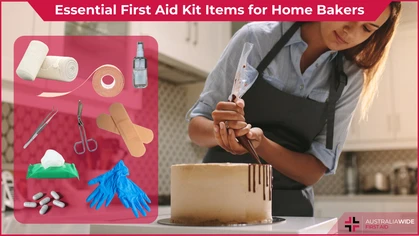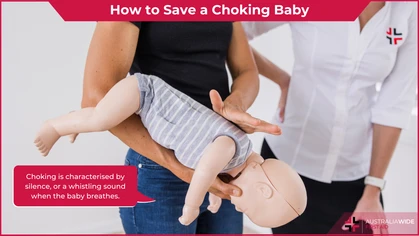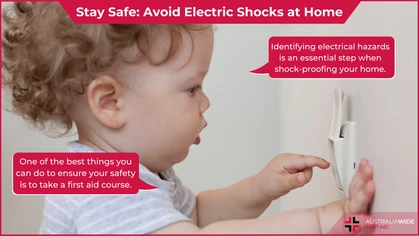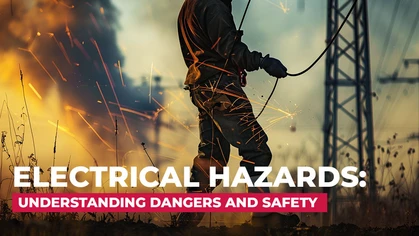How Alcohol Affects You: A Guide to Drinking Safely

Danger
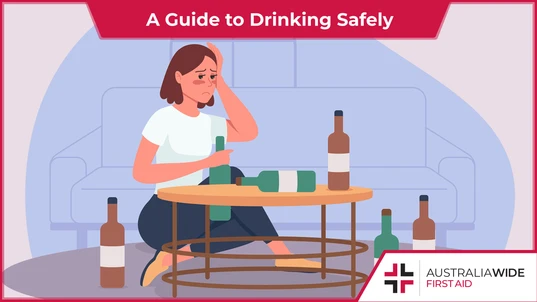
Alcohol is a big part of Australian social and cultural tradition. Many of us turn to a glass of wine or bottle of beer to wind down after a long day at work. However, it's important to know the principles of safe drinking, as people can and have died from intoxication.
We all enjoy taking a couple of glasses of wine or bottles of beer to unwind after a long day. While consuming a moderate amount of alcohol is unlikely to cause any harm, excessive drinking can adversely affect you and even the people around you. If you choose to drink alcohol, the effects it has on you depend mainly on how frequently you drink and the amount you take. Excessive drinking can affect your physical and mental health. Your drinking doesn’t affect you only; it also affects other people, such as your family, social circles or friends and the people around you. Therefore, you must consider drinking safely and responsibly for your sake and the people around you. If you would like to learn more about how alcohol affects you, how much drinking is too much and ways you can drink safely? Keep reading as we provide answers to all your questions.How Alcohol Affects You
Always remember that alcohol will affect you regardless of the amount you take. Drinking even a little alcohol can increase your risk of cancer. However, how alcohol affects you depends on how much you drink. Drinking too much can cause short and long-term effects. Alcohol can affect a number of your body systems. Consumption of alcohol can affect your heart by raising your blood pressure, damaging your heart muscles and causing a stroke. Alcohol can affect your brain by causing brain damage, tremors, dementia, and nerve damage. Alcohol also affects your coordination, self-control, judgement, and reaction time; you’re likely to hurt the people around you because you’re not in control. Alcohol can cause inflammation of the stomach and bleeding in the stomach. Alcohol has fatal effects on every organ in your body, including your liver, kidney, and pancreas. Women who take alcohol have been proven to be more at risk of breast cancer, infertility, and hormonal imbalance.ABC of Alcohol: Alcohol in the Body
When you take alcohol, it passes into your body through your stomach’s wall and small intestine. It then travels through your blood to another part of your body, including the brain. When alcohol reaches your brain, it slows it down and affects almost every part of your body. Alcohol takes only a few minutes to get into a healthy average person’s brain. The liver metabolises and breaks down the alcohol in your body in a two-step process. Alcohol is first broken down into a chemical called acetaldehyde by an enzyme and then broken down to acetic acid. The cells in the body then break the acetic acid down further into carbon dioxide and water, which are later eliminated from the body via urination and breathing.Blood Alcohol Concentration
As you drink, the alcohol level in your body increases. The level of alcohol in the blood is called Blood Alcohol Concentration (BAC). A BAC of 0.01 shows you have 0.01g of alcohol in 100ml of your blood. In an average, healthy person, one standard drink, which is about 375ml of a (2.7%) mid-strength beer or about 100ml of 13.5% red wine, can increase BAC by about 0.02 and takes almost an hour to break down. But remember this varies in different people. Your blood-alcohol concentration (BAC) is a sure guide for how your body is being affected, regardless of how often you drink. The best way to determine your BAC is through a breathalyser - a handy guide for how BAC readings impact you can be found here.Alcohol Impairment Chart
Alcohol impairment begins with your first drink. Alcohol impairment is related to the concentration of alcohol in the blood. Alcohol slows down the nervous system’s functions, which delays normal brain functions and makes an individual unable to function normally.The 7 Stages of Alcohol Intoxication
Alcohol intoxication is often a result of taking too much alcohol in the short term, which can be harmful and deadly. You can get intoxicated from taking any type of alcohol, including beer, wine, or liquor. Alcohol intoxication occurs when the liver cannot remove alcohol from the blood fast enough because the blood alcohol level is too high. Mostly, you can’t reverse the effects of intoxication, but some things can be done to prevent things from getting worse. Suppose you suspect someone around you is intoxicated. In that case, you can perform first aid to stabilise the causality while waiting for an emergency. If you don’t know how to carry out the first aid on someone intoxicated, you can take one of our First Aid Courses to prevent and manage intoxication from getting more deadly. The seven stages are:Stage 1: Sobriety
Subclinical intoxication this occurs at a BAC of 0.01-0.05, and the person is not likely to appear intoxicated, though some tests may detect impairment.Stage 2: Euphoria
Occurs between 0.03 and 0.12 BAC, which varies on body size and gender. In this stage, the person feels more confident and becomes talkative and animated. People mainly refer to this as being ‘tipsy’.Stage 3: Excitement
A BAC of 0.09-0.25 can land you in this stage. The person may experience emotional instability, lack of critical judgement, and delay in reaction time. They will also experience slurry speech, blurry vision, loss of balance, drowsiness, nausea and vomiting. People around them will notice they are drunk.Stage 4: Confusion
This occurs at a BAC of 0.18-0.30, which is characterised by emotional disorder and disorientation. The person becomes very dizzy and is more likely to forget things.Stage 5: Stupor
A BAC of 0.25-0.40 can cause this. Someone at this stage is highly intoxicated and is at significant risk of alcohol poisoning and death. They lose control of their body, vomit and pass out. Medical help is vital at this stage.Stage 6: Coma
A BAC of 0.35-0.45 will likely send anyone into a coma. At this stage, body temperature drops, respiration and circulation become severely depressed, and they are at risk of death.Stage 7: Death
At about 0.45 BAC, most people cannot sustain their functionality, and the risk of respiratory arrest and death is high.Top 7 Tips for Safe Drinking
Follow the following tips to drink safely:- Understand how much alcohol you can take and how much your body can handle.
- Ensure you eat before taking and while taking alcohol, as this slows the breakdown of alcohol in the stomach.
- It’s easy to drink more than you want to, so set a drink limit and stick to it. Make sure you count your drinks.
- The body can process only one standard drink per hour. You can slow your intake by taking water, sipping instead of gulping, and opting for low-alcohol drinks.
- Avoid drinking games and shots because you’re more likely to get intoxicated faster.
- It’s against the law to drink and drive in Australia. The more you drink, the more you’re likely to have a road accident which can affect another person.
- If you’re very young, pregnant, breastfeeding, depressed, or on any form of medication, don’t drink.
Alcohol Poisoning
Alcohol poisoning is a severe and deadly consequence of consuming large amounts of alcohol in a short period. Drinking too much can adversely affect your breathing, heart rate, body temperature, and gag reflex, possibly leading to a coma or death. Alcohol poisoning needs immediate medical help to prevent things from deteriorating further. Symptoms of alcohol poisoning are confusion, vomiting, seizures, slow breathing, pale skin, low body temperature, and unconsciousness.First Aiders Guide to Alcohol
The first aid for alcohol intoxication is often a dose of paracetamols or liver salts and slow re-hydration back to normal. Ensure the person doesn’t lie face up to prevent them from choking to death or suffocating on their vomit. Let the person lie on their side to encourage a clear airway in case they start vomiting. Check for and treat any visible external injuries before the medics arrive.Do you Know your Limit?
Knowing your limit will help you understand how to control your drinking and drink safely. When you’re drinking, keep track of many you have taken. Everyone has different alcohol limits, and this is because everybody processes alcohol differently because of factors such as age, weight, or gender. To understand your drinking limits, you need to know the recommended limits. Moderate drinking is:- Up to 1 or fewer standard drinks per day or seven drinks weekly for women.
- Up to 2 or fewer standard drinks per day or 14 drinks per week for men.
Questions and Answers
- Q: How many hours after drinking can I drive?
- A: it takes almost 1 to 2 hours to process one standard drink, which means you can drive 2 hours after a standard drink.
- Q: How long until it’s safe to drive after drinking too much?
- A: This depends on how much you have taken, but it is safe when your BA level has dropped below the legal limit, which may take about 8 hours.
- Q: How long can a person stay drunk?
- A: it takes about 6-8 hours for the effects of being drunk to wear off completely
- Q: Would you pass a breathalyser 10 hours after having a half-pint?
- A: Yes, a breathalyser won’t detect anything after 10hrs of taking a half-pint
- Q: How long do the effects of alcohol last in the body?
- A: it takes about 25hrs for your body to clear off all the alcohol completely
- Q: How long after one drink can you drive?
- A: you can drive 2hrs after taking a standard drink
- Q: Is it safe to drive after only one standard drink?
- A: it’s not safe to drink after driving
- Q: How much alcohol in the blood is too much?
- A: BAC of 0.40 and above can lead to death or coma. 0.8 is the point you’re considered intoxicated in most places.
Originally published at
https://www.australiawidefirstaid.com.au/resources/guide-to-drinking-safely
as part of the Australia Wide First Aid Articles Library




